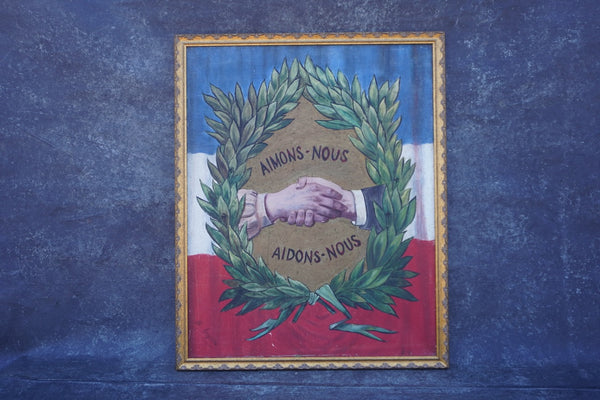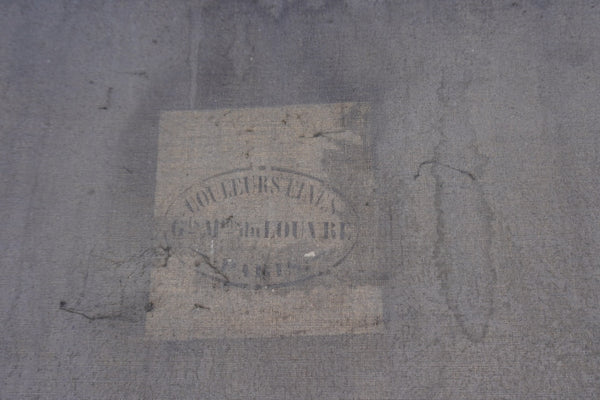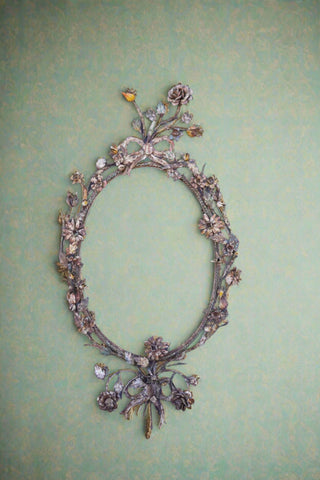Bl. Jacqueury - Aimons-nous, Sauvons-nous - Oil on Canvas P3396
Beautiful. And more than a little mysterious. Deeply French.
Measures 38 1/2" high x 31" wide. Contact us to arrange special shipping, local delivery, or pickup at the warehouse.
There's some unpacking to do of this striking image, this oil painting that behaves like a poster.
First let's translate the slogan Aimons-nous, Sauvons-nous. The direct translation would be Love each other, Help each other. We see two hands clasped in friendship. The hand on the left displays the sleeve of a peasant's smock (still generally worn as work clothes by farm laborers in the French countryside at the beginning of 1900s), while the hand on the right belongs to the educated professional class with its modern shirt and suit jacket. A laurel wreath is bestowed upon this symbol of unity, against the tricolor backdrop of the French flag.
The signature reads Bl. Jacqueur or Jacqueury (the flourish confuses the modern eye) with the date 16th of November 1911 (or 1917). Let's see what either date suggests to AI:
"On November 16, 1911, the signing of the Franco-German peace treaty in Berlin officially ended the Agadir Crisis. This agreement settled colonial disputes over Morocco, with France establishing a protectorate and ceding territory in the French Congo to Germany, according to Wikipedia. This date marks the official end of a significant international diplomatic incident that brought France and Germany close to war.
While the phrase "aimons-nous, sauvons nous" (let us love each other, let us save ourselves) isn't directly tied to the treaty, it encapsulates a sentiment that might have been present in France at the time.
Context for the phrase
- France was navigating a complex political and social landscape in 1911.
- There were domestic political changes and international tensions, particularly with Germany.
- The Agadir Crisis itself caused anxieties about the possibility of war, intensifying the desire for peace and cooperation.
Therefore, "aimons-nous, sauvons nous" could be seen as an expression of hope for French unity and resilience, particularly in the face of ongoing internal and external challenges.
This could also apply to the date if the 1911 is read as 1917: On November 16, 1917, a pivotal moment occurred in French history amidst the backdrop of World War I: Georges Clemenceau was appointed Prime Minister of France. This was his second time in the role, and it coincided with a period of significant turmoil and uncertainty for France. "
We may not have cracked its code, but we sure had fun trying.
Nothing comes up for the name in the signature. We have done our best.
(One last stab in the dark: the Jacquerie was a 14th century peasant revolt during the Hundred Years War.)













